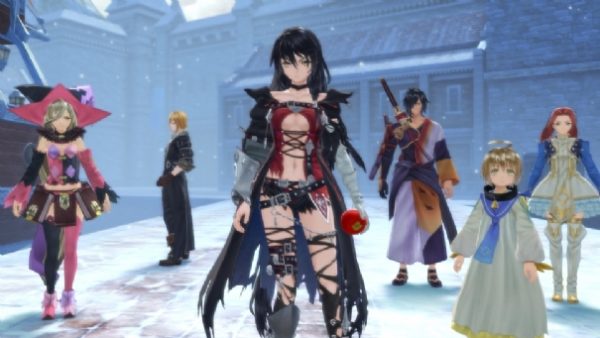A plot that grew up right away
Many JRPGs, according to a non-written rule of thumb, tend to slip over too early in play, with the risk of the player finding hours and hours of play to weave the ranks of a story that they never want to take off and boredom which could already be distracted from
advancing. In Tales of Berseria, in spite of the long tutorial spread over the first 3 hours of play, the opposite is true: on the one hand the story is immediately engaging and on the other we find a tide of mechanics with which to deal with immediately. It is th
erefore desirable to start with a hint of history. An incurable illness called Daemonblight has long begun to turn people into demons. The only ones able to stop spreading the plague are exorcists. These are men accompanied by Malakin (spirits enslaved to
them) that provide them with the power to fight these demons. The clothes we are going to cover will be those of Velvet, a young girl who after becoming a demon and ending for three years in a prison of maximum security, is able to escape with the only goal of triggering her revenge anger against the ” exorcist who holds the power on the Abbey and reflects upon the Empire, subjected to a theocratic regime made more of shadows than lights.
This is not the story of a group of little boys leaving to rescue a country or men seeking personal redemption, but a girl in search of revenge and complex, unobtrusive characters with stereotypes that often and willingly leave room for more in-depth characterizations.
More and more refined mechanics
Moving on to the other pillar of the game, that is, the combat system, it remains faithful to the hinges set by the series, freely summarized in the free movement and the arts (name by which the various attacks are defined), and rearranging them around the mechanisms of the Breath . It consists of five segments of tot points each, at the beginning of the fight there are only three, the minimum
is one and the maximum is five. Each action, divisible into martial art, occult and Malak (between the base ones), breaks souls and mystical arts (among the advanced ones) consumes a different amount of points and some of them are unlocked only by having a definite nu
mber of active segments. By making variations in status on the enemy, we will gain a segment and we will be able to run longer combos, otherwise we would lose them. To this we can add the classic skill system, so once you master a skill by using an object we can use it independently of its presence in the equipment. Finally, once again, the kitchen will provide us with temporary bonu
ses to prepare us for the best before a battle.
The typical complexity of the series will be immediately read by the veterans, while the others will have to lose some time on the game menus to be able to frame all the elements. Luckily grinding against the game start monsters, as long as it may be boring, can provide a
not too cramped environment where to take the hand with the mechanics. During the adventure then the game will give us the time to deepen the complexity of the combat, useful to remove advanced techniques against the most ruthless enemies, but not essential to master to progress naturally in the game.
The legacy of the past
Artically, the game does not hide the same team as designers of the previous chapters, going to define a style that, more and more, can be considered a badge for the series. Fortunately, the result of this type of illustration does not particularly affect the weight of the years and the screening is also pleasant this time and leaves room for small, albeit invigorating, variations on the subject.
Even on the technical side, the situation remains unchanged from the past, but contrary to the discourse made on the art component, we can not be equa
lly satisfied. The cross-gen nature of the original product, although in Europe only comes in PS4 and PC version, emerges with force from the net lines of models that are scarcely populated by polygons of the elements of the environme
nt and the limited mapping, small and little detail. On a high-end PC the game is very fluid, with no obstacles that can only be attributed to bad optimization.

